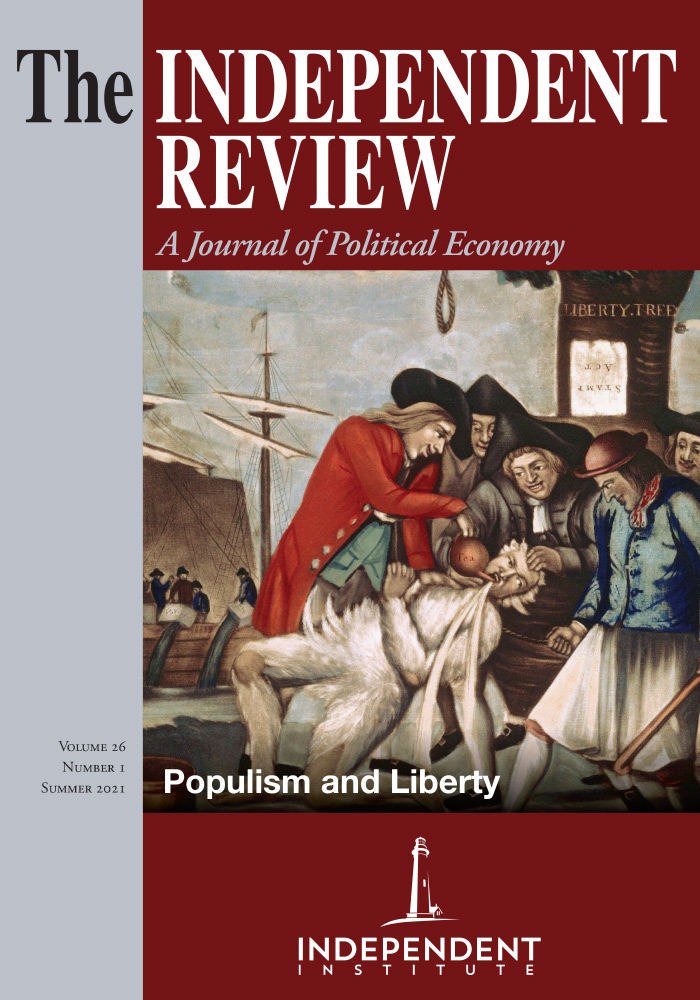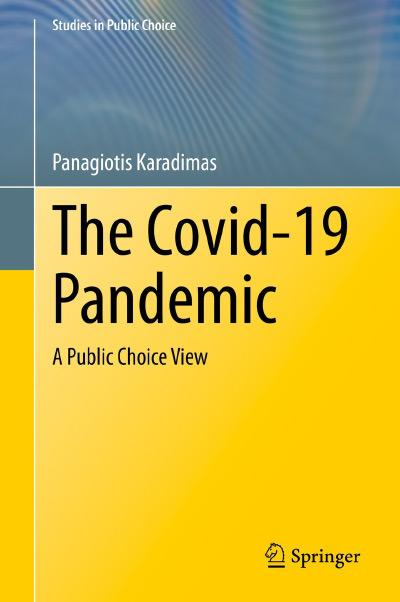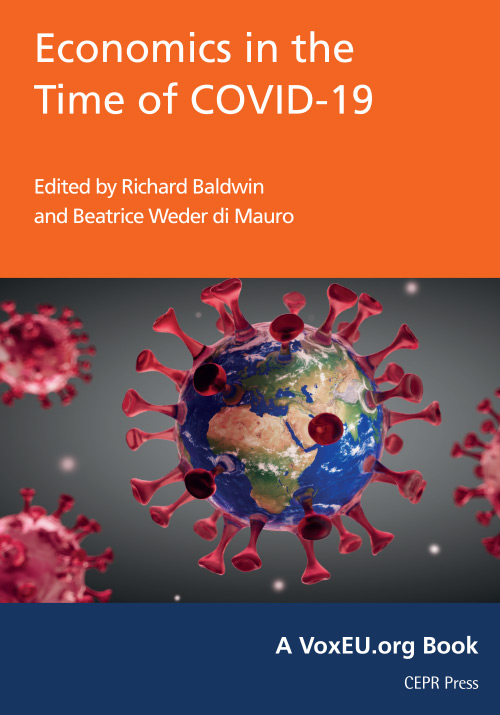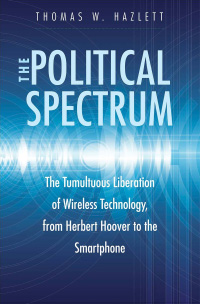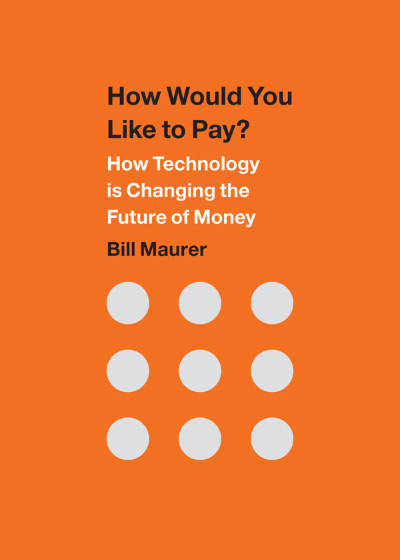John Fabian Witt highlights many cases where the American legal system influences the scope of public health rules in our ever-present fight against infectious diseases. Despite the number of cases discussed, which is a testament to Witt’s mastery of the subject, there are numerous shortcomings that make the book underwhelming as an analysis of the interaction between legal institutions and public health. As an introductory text on the history of such topics, however, the book is on a more solid footing.
Witt’s goal is to show that the American legal system influences public health for better or worse. That is, formal public health rules—and the court rulings that support or undercut those rules—alter the myriad interactions people take part in to improve their health, such as compulsory smallpox vaccinations. On some level this argument is novel and interesting; how formal legal rules influence expectations about which behaviors are acceptable is important and can have relevant private and public health implications. The well-known Jacobson v. Massachusetts (1905) case is one case that legitimately enshrines local, state, and federal governments with the power to provide public health above our desire for civil liberties. Since that ruling, American courts have consistently ruled in favor of the pursuit of public health over civil liberties as long as public health officials follow appropriate procedure, e.g., the application of a public health rule like quarantine to all, not some, potentially infected persons. Witt nicely explains the benefit of these rulings and provides historical and modern examples where public health rules were overturned or stymied for their failure to follow procedure.
Witt does not, however, develop this foundation into a clear argument that might direct us towards altering the complex links between public health and our court system. One of the main pieces for such an analysis is a clear definition of what a case is; of all the histories and interactions Witt mentions, what are they representative of? Witt organizes each chapter thematically, but it is too imprecise to draw connections, general principles of law and public health, or a sustained in-depth argument. Some of the histories focus on legal cases that uphold public health rules, but some do not. Some of the legal cases discussed highlight the vagaries of the American court system; some highlight the importance of precedence. Some prioritize civil liberties, but some do not. Readers are rarely left with a clear argument from Witt regarding how we should understand the history, let alone policy recommendations. A more developed argument could have provided some explanation for contrasting cases and policy implications. Similarly, a nod to what improvements might look like would be helpful.
Relatedly, there is no framework to better understand the influence courts have on public health practices and rules. There is little explanation as to why some courts are loath to infringe upon civil liberties, while others are not; and there is little discussion on the conditions under which a court decision might or might not be appropriate given a stated hierarchy of normative values. The Jacobson v. Massachusetts case is telling. Pastor Henning Jacobson refused to take the Smallpox vaccine in 1903, for which he was fined; eventually the Supreme Court upheld the fine. Witt points to the nuanced decision of Justice John Marshall Harlan, namely that a different set of circumstances would have led to a different ruling. For example, the state’s vaccination efforts could have been deemed unconstitutional if the court had found evidence that the administration of the vaccine was arbitrary or oppressive. Jacobson made that argument, which the court heard, but Witt only speculates as to why the court decided against its own advice. Beyond that case, the implications for public health are unclear. Given the logic and ruling of Jacobson v. Massachusetts and related legal cases, how does the legal system create expectations for what is appropriate behavior, let alone proper public health rules? Is our court system an efficacious means of establishing and supporting such expectations? The primary goal of the text—to show connections between our institutions of public health and law—leads to these questions, but Witt does not wade into such complexities.
Another example where a framework would have improved the argument comes from our recent experiences with COVID-19. Responding to the perceived political nature of the Wisconsin state supreme court’s decision to overturn “Order 28”—the May 2020 emergency COVID-19 provisions that prohibited all nonessential travel, closed businesses, and barred private gatherings outside of a single family—Witt (p. 116) states:
The law of public health has always been political because disputes over the basic rights of individuals and the power of the state (in moments of public health emergency or otherwise) pose questions about the values by which we order our communities. Such disputes require resolution of basic questions. How much risk ought we to take? How valuable is human life, and what is the proper weight given to economic life and wealth? How ought we to distribute the costs of public health? Resolving such grave questions, whether in legislatures, statehouses, or courthouses, inevitably involves political judgment.
That people have differing values and that those values clash with other values is an underappreciated point, and Witt is correct to point this out. Witt asks these apt questions—questions that should foster meaningful discussions and potential policy improvements—without offering a way to answer them.
One of the more interesting discussions Witt initiates, but fails to extend, is on the clash between our public health goals, our concerns for civil liberty, and the role public health experts play in attenuating that clash. Many people and judges are aware of the common defense of public health, i.e., we cede some rights—temporarily during a crisis—so we can have greater opportunities after the crisis. Witt invokes this common understanding and explains some cases where public health rules were appropriate and some cases where the same rules were inappropriate, which prompted legal action. He then states,
Considerations about what courts are good at—and what they’re not—have led courts to be cautious in articulating ideas about the core values of the law in the domain of public health. Courts are ill-trained to make hard judgments about the course of an infectious disease ... Public health experts, not courts, have often had the best answers to these questions. Nonetheless, judges must still apply the law and keep the experts within it. American courts have historically resolved this tension by sending some difficult issues back to elected officials and back to public health experts for a second judgment (p. 81).
There is much to discuss, but the chapter soon ends with more questions than answers. One salient way to develop the argument would be to consider when and where public health scholars and administrators have expertise that is directly relevant to the legal issues of a case. Do they always have the “best” answers to public health problems; this is not clear. For example, if many of the primary and secondary causes of public health problems are related to poverty—as Witt suggests throughout the book and as the centuries-old literature on social epidemiology suggests (Kaori Honjo. 2004. “Social Epidemiology: Definition, History, and Research Examples.” Environmental Health and Preventive Medicine 9(5): 193-199)—economists and other social scientists might have better answers to alleviate the conditions of poverty than public health scholars. Perhaps a better way to phrase this is that public health scholars are not alone in their expertise, so it is not clear why public health scholars are prioritized in our legal system. Aside from giving numerous insights into the causes of poverty, the economic way of thinking also lends itself to understanding how people might respond to perceived emergencies related to the spread of infectious diseases, which might have direct implications on the benefits of public health rules and their legality. See, for example, Richard Posner and Tomas Philipson’s Private Choices and Public Health: The AIDS Epidemic in an Economic Perspective (Cambridge, MA: Harvard University Press, 1993) and Byron Carson’s “Automatons or Individuals? Voluntary Responses to COVID-19 Related Epidemic Externalities” (The Independent Review, 2021, 25(4): 551–567) for explicit economic approaches to understanding how individuals respond to the HIV/AIDS and COVID-19 epidemics, respectively.
The role public health as a science plays in developing public health law, as well as the role public health practitioners play, should be also be discussed. For example, public health emergencies are rarely defined with clarity sufficient to aid the plans of individuals, i.e., to plan for and around one’s civil liberties being violated. That is, what does a crisis look like so I might know when I can expect to have my civil rights violated? These are difficult questions as genuine crises are inherently uncertain, but our courts and public health rules might benefit from explicit definitions and principles that clarify a normative weighting or hierarchy of rights—as Witt suggests—and when other principles take precedence like during a crisis. Such discussions would improve our expectations of how other people respond to genuine crises and, for our own planning, an understanding of which actions are permissible and/or expected.
The expertise of public health officials might be overstated given the incentives and biases they face and the relevant alternatives to expertise. In Expert Failure, Roger Koppl (New York: Cambridge University Press, 2018) explores how supposed experts might be prone to mistakes, which can lead to adverse consequences. Witt mentions some of these concerns, e.g., the CDC and their poor handling of COVID-19 testing during the first months of the pandemic, but he seems to ignore such concerns when experts are used in a courtroom. A discussion on when and where public health experts face incentives to pursue private instead of public goals seems relevant.
Finally, public health experts and settled science might not be a necessary nor sufficient guide for public health law. This is especially true once we account for the role beliefs play in our understanding of cause and effect and in disease transmission. During the early 1900s, for example, people lived in areas where firms engaged in activities that fostered mosquito breeding habitats, which potentially increased malaria prevalence rates (see, for example, Polly Price, Polly. 2010. “Federalization of the Mosquito: Structural Innovation in the New Deal Administrative State.” Emory Law Journal 60(2): 325-376). Local residents—armed with local knowledge—complained and sued; they argued they would not have acquired malaria otherwise. The judges who heard these early cases—armed with “current” theories of disease and, perhaps, expert opinion—ruled in favor of the firms because the residents could not convincingly demonstrate the link between the actions of the firm and their malarial infection. Public health experts would not have been a relevant arbiter in such cases given the different models of transmission within public health science. Of course, our beliefs about malaria developed after the discoveries made by Ronald Ross and others in the late 1890s on the scientific connection between mosquitoes and malaria (despite local knowledge, suspicions, and myths about mosquitoes throughout the centuries in and out of the United States). As those beliefs changed and as Ross’s insights became more commonly accepted, the value of public health expertise waned on this margin. Throughout the first three decades of the 1900s, judges began to issue more and more rulings and fines against the firms in these cases because they believed their actions were the cause of malarial infections. These beliefs changed so much that firms began to implement mosquito control programs and monitor the health of local populations because they expected adverse decisions from the court. In these cases, beliefs were more relevant than public health expertise.
What should courts do in these kinds of cases and how should they make the tradeoff between pursuing public health and protecting civil liberties during public health emergencies? These are pressing questions with unclear answers; John Witt’s book is a nice place to start discussion.
| Other Independent Review articles by Byron B. Carson III | ||
| Fall 2024 | Pox Romana: The Plague that Shook the Roman World | |
| Winter 2023/24 | Questioning the Entrepreneurial State: Status-quo, Pitfalls, and the Need for Credible Innovation Policy | |
| Fall 2022 | Pandemia: How Coronavirus Hysteria Took over Our Government, Rights, and Lives | |
| [View All (4)] | ||

